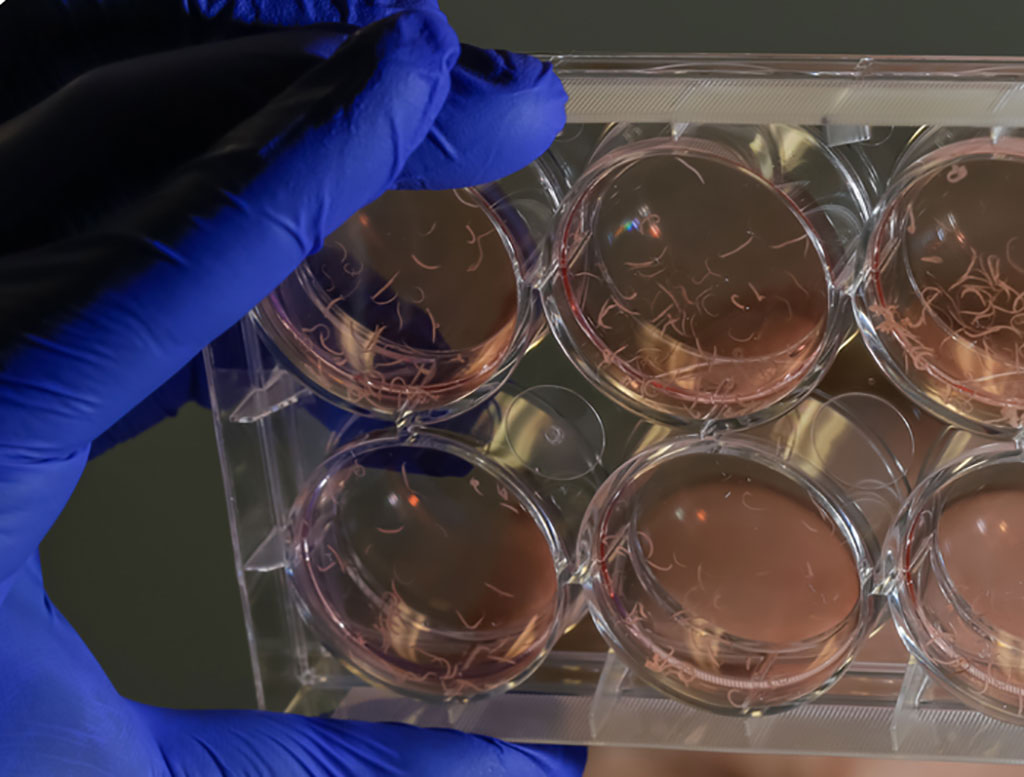A Rapid and Sensitive Lateral Flow Test for Diagnosis of Schistosomiasis
By LabMedica International staff writers
Posted on 01 Dec 2021
A novel lateral flow immunoassay enables the rapid and sensitive diagnosis of the urogenital form of schistosomiasis in both laboratory and field settings.Posted on 01 Dec 2021
Schistosoma haematobium is the most common cause of urogenital schistosomiasis in humans, responsible for infection in approximately half of the estimated 200 million people with the disease throughout the world's tropical and subtropical regions. Although there is no gold-standard recommended technique for detection of schistosomiasis, a widely used method for diagnosing infection involves microscopy-based detection of parasite eggs in urine, which can have poor sensitivity in areas of low transmission, limiting its diagnostic value in regions where the disease is present but uncommon.

Image: Schistosoma haematobium, the most common cause of urogenital schistosomiasis in humans (Photo courtesy of Romy Bullerjahn)
Investigators at James Cook University (Cairns, Australia) screened the family of proteins secreted by the S. haematobium parasite to identify antibody biomarkers of schistosome infection, validate their diagnostic performance in samples from endemic populations, and evaluate their utility for use in point-of-care immunochromatographic tests (POC-ICTs) to diagnose urogenital schistosomiasis.
The initial screening study with serum and urine antibodies from endemic populations in Gabon, Tanzania, and Zimbabwe was carried out by collaborators at the University of Southern California (Los Angeles, USA), who fit nearly a thousand different S. haematobium antigens onto a microarray chip. Antigens that were found to be IgG-reactive were then evaluated by ELISA using both the same samples as well as additional samples from individuals residing in a low-endemicity settings (ie, Pemba and Unguja islands, Zanzibar, and Tanzania).
Results revealed that 208 antigens were the targets of significantly elevated IgG responses in serum, and 45 antigens were the targets of significantly elevated IgG responses in urine. Of the five proteins that were validated by ELISA, Sh-TSP-2 and MS3_01370 displayed the highest overall diagnostic performance in each biofluid and exceeded that of S. haematobium-soluble egg antigen in urine. When incorporated into separate POC-ICTs, Sh-TSP-2 showed absolute specificity and a sensitivity of 75% and MS3_01370 showed absolute specificity and a sensitivity of 89%. Thus, the Sh-TSP-2 and MS3_01370 antigens could be used as sensitive, specific, and field-deployable diagnostic biomarkers to support schistosomiasis control and elimination.
“This is a disease of poverty,” said first author Dr. Mark Pearson, research fellow at James Cook University. “Although there are effective drugs available to treat it, it becomes a serious health issue where contaminated drinking water and waterways lead to frequent reinfections. To interrupt the spread of the disease, a test needs to be sensitive enough to identify people with low-level infections, who can still pass the parasite on to others when they might not know they are infected themselves.”
The POC assay for schistosomiasis was described in the August 31, 2021, online edition of the journal The Lancet Microbe.
Related Links:
James Cook University
University of Southern California




 assay.jpg)







